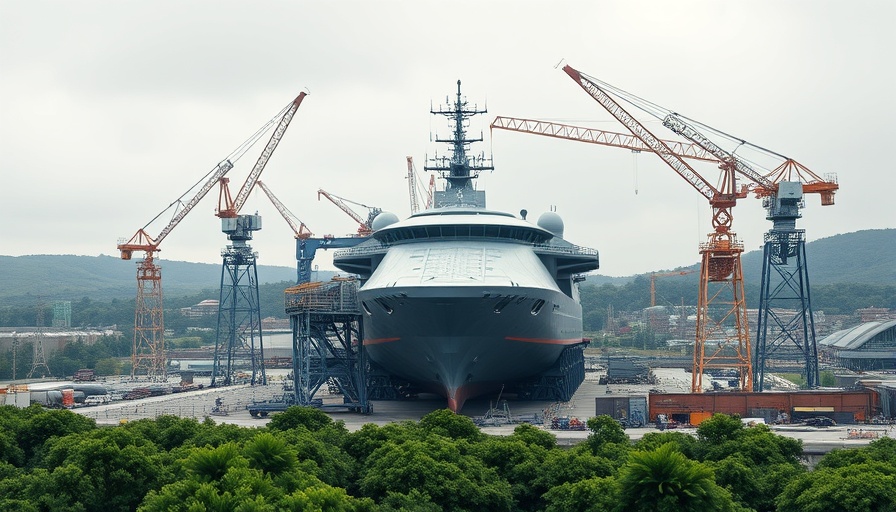
Delivering the Future: The Last Independence-Class LCS
Austal USA recently hit a significant milestone by delivering the final Independence-class littoral combat ship (LCS) to the U.S. Navy, marking the completion of a pivotal segment in modern naval warfare. This advanced vessel, named the USS Mobile, is designed to enhance the Navy's capabilities in coastal areas, engaging in missions that require agility and versatility.
What Makes the Independence-Class Unique?
The Independence-class LCS stands out due to its innovative design and modular approach, making it capable of addressing various mission requirements—from anti-surface warfare to mine countermeasures. With a speed of over 40 knots and a shallow draft, these ships can maneuver in waters where traditional vessels struggle.
A New Era in Shipbuilding Technology
Utilizing cutting-edge materials and technology, the Independence-class represents a shift in shipbuilding. Constructed primarily from aluminum, these vessels are lighter yet robust, making them more efficient in operations. The modularity allows for rapid upgrades, ensuring the fleet remains technologically advanced.
Impact on Defense Strategy
As global maritime threats grow, the deployment of the USS Mobile will bolster the U.S. Navy's presence and strategic capabilities in contested regions. This ship can operate independently or as part of a larger task force, adjusting seamlessly to the dynamic nature of modern conflicts.
Lessons Learned and Challenges Faced
The journey of the Independence-class program was not without its hurdles. Austal USA faced challenges related to production processes and cost management. However, through strategic adjustments and workforce dedication, the company successfully navigated these hurdles, ensuring the timely delivery and performance of the USS Mobile.
The Human Element of Shipbuilding
Behind the machines and blueprints lies a dedicated workforce. Shipyard employees, from engineers to welders, each played an essential role in bringing this ship to life. Their stories of commitment and craftsmanship highlight the essence of shipbuilding as not just a technical endeavor but a community effort.
Looking Ahead: What’s Next for the Navy?
With the successful delivery of the Independence-class ships, the U.S. Navy has a firm foundation for future naval projects. The developments in ship technology and strategies around littoral operations will influence maritime doctrines for years to come. This shift recognizes the importance of coastal operations in contemporary naval warfare.
Encouraging Innovation in Ship Design
As we celebrate this achievement, it presents an opportunity to reflect on the broader implications of innovation within the defense industry. The success of Austal USA serves as inspiration for future designs that marry sustainability and performance—key attributes in today’s military-recognizing the need for eco-friendly practices alongside effective defense capabilities.
In conclusion, while Austal USA wraps up its current contract with the U.S. Navy by delivering the USS Mobile, the impact of the Independence-class LCS will resonate within naval strategy, shipbuilding technology, and even workforce commitment for years to come. These vessels are a testament to what is possible when innovation meets dedication.
 Add Row
Add Row  Add
Add 




Write A Comment